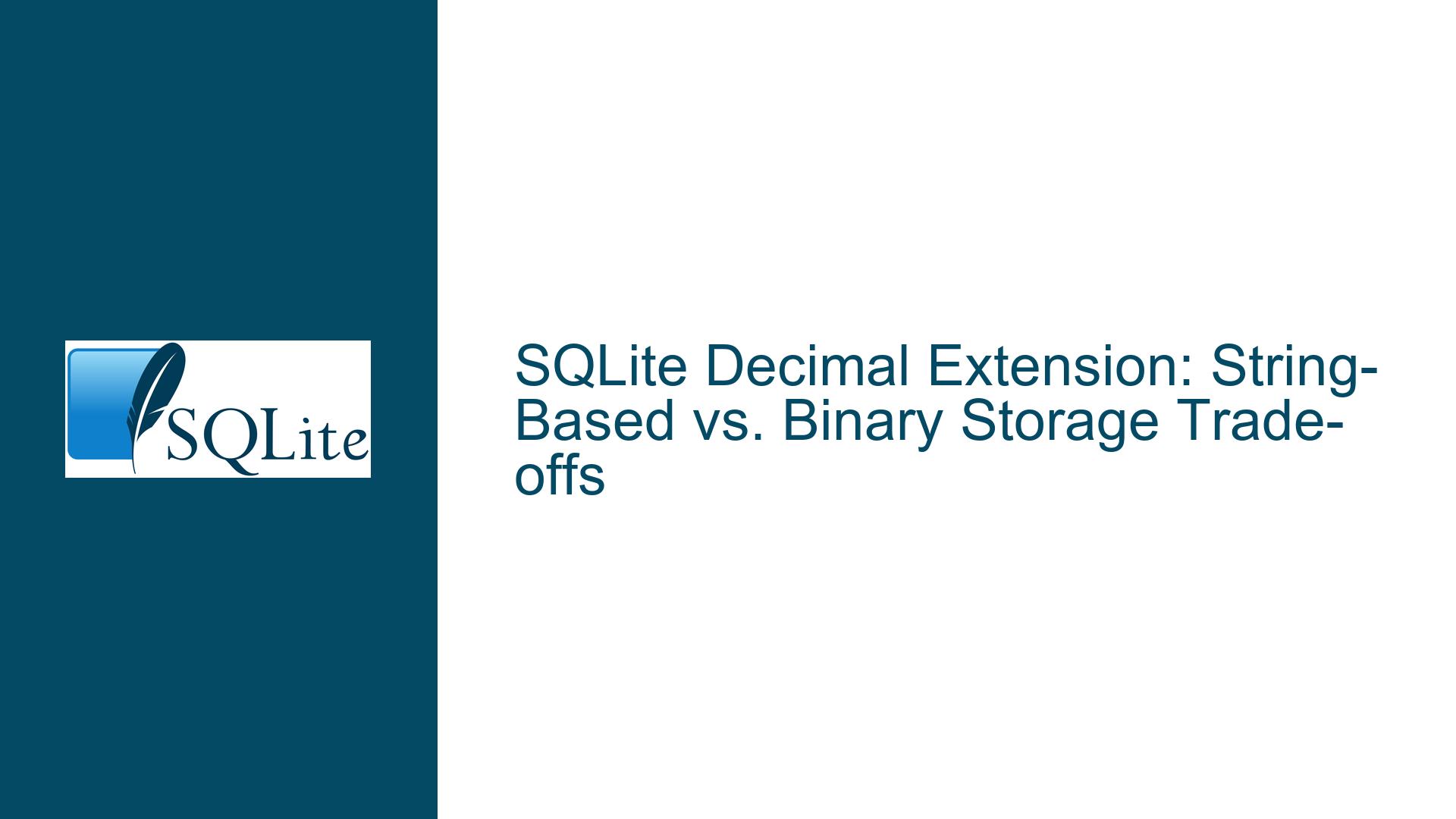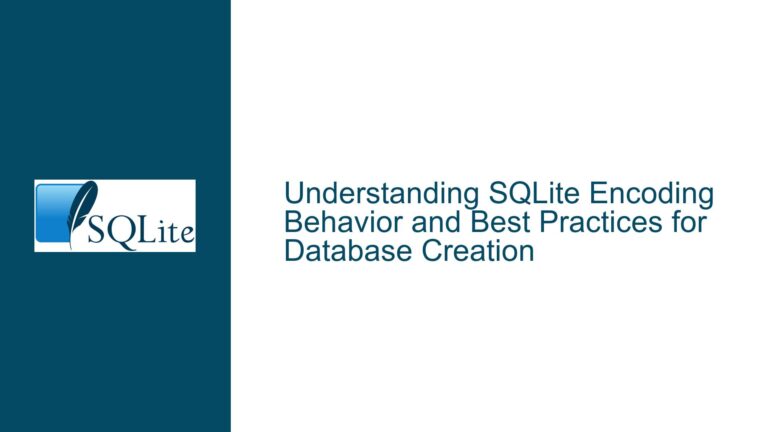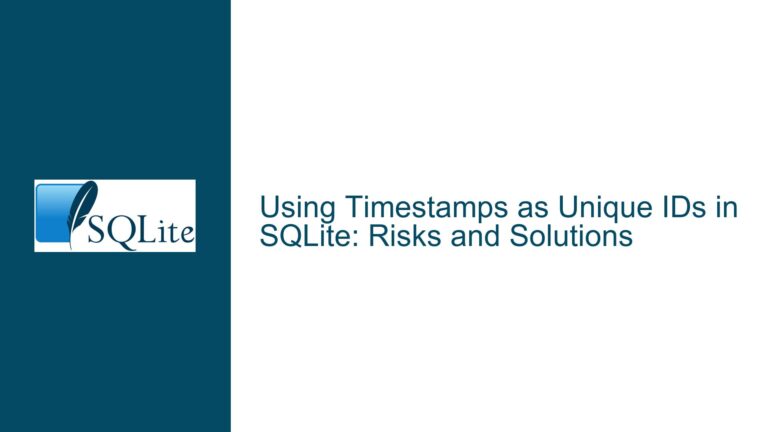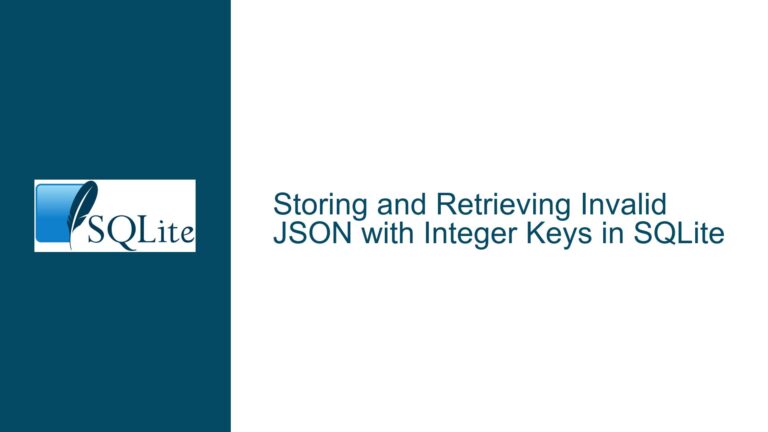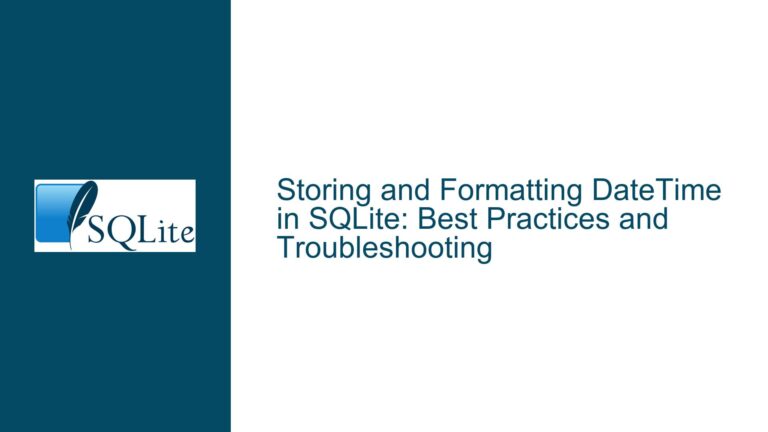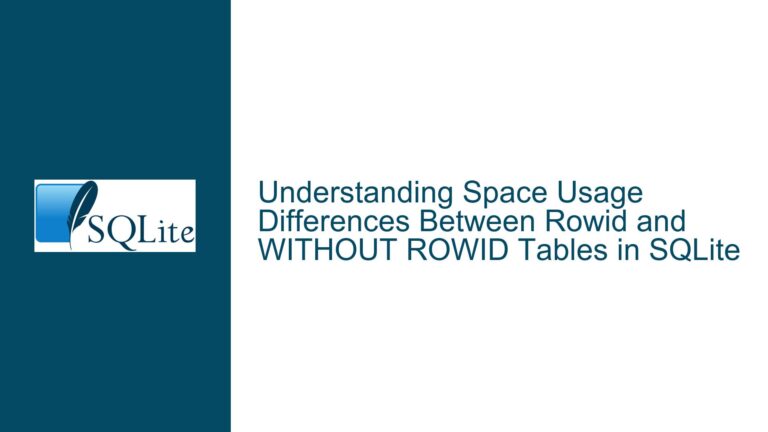SQLite Decimal Extension: String-Based vs. Binary Storage Trade-offs
String-Based Decimal Storage in SQLite’s New Decimal Extension
The newly introduced decimal extension in SQLite employs a string-based approach for representing decimal numbers. This means that decimal values are stored as character arrays (strings) within the database. While this method is straightforward and leverages SQLite’s existing text handling capabilities, it introduces several considerations regarding performance, storage efficiency, and computational overhead.
Storing decimals as strings allows for easy human readability and straightforward implementation, as SQLite already has robust mechanisms for handling text data. However, this approach can lead to inefficiencies in both storage and computation. For instance, string comparisons for ordering and indexing are generally slower than binary comparisons, especially for large datasets. Additionally, arithmetic operations on string-based decimals require parsing and conversion, which adds computational overhead.
The string-based approach also imposes limitations on the precision and scale of decimal numbers. While SQLite’s flexible typing system can accommodate varying lengths of strings, the lack of a fixed binary format means that operations like sorting, indexing, and arithmetic must handle variable-length data, which can be less efficient than fixed-length binary representations.
Binary Encoding for Decimal Storage: The DecimalInfinite Format
An alternative to string-based storage is the use of a binary encoding format, such as the DecimalInfinite (decInfinite) format proposed in the sqlite3decimal project. This format stores decimal numbers as binary large objects (BLOBs), which can represent any finite number of digits, as well as special values like NaN (Not a Number) and infinities. The DecimalInfinite format has several advantages over string-based storage, particularly in terms of performance and storage efficiency.
One of the key benefits of the DecimalInfinite format is that it preserves the total ordering of decimal numbers, including special values like +/- infinity. This property allows for efficient comparisons using simple memory comparison functions like memcmp(), without the need for decoding or parsing. This can significantly speed up operations like sorting and indexing, which are critical for database performance.
The DecimalInfinite format is also compact and future-proof. It does not impose any fixed limits on the number of significant digits or the range of exponents, making it adaptable to future requirements. For example, a database could initially support decimals with up to 10 significant digits and later extend this to 20 digits without needing to change the underlying storage format. This flexibility is particularly valuable in a database context, where schema changes can be costly and disruptive.
Another advantage of the DecimalInfinite format is that it can be easily adapted to different internal representations for arithmetic operations. While the current implementation in sqlite3decimal uses the decNumber library for arithmetic, the binary format itself is independent of the specific arithmetic library used. This means that the format could be used with other libraries or even with custom arithmetic implementations, providing flexibility in how decimal operations are performed.
Implementing Binary Decimal Storage with PRAGMA journal_mode and Backup Strategies
To implement binary decimal storage in SQLite, several considerations must be taken into account, particularly regarding data integrity and performance. One of the first steps is to ensure that the database is configured to handle binary data efficiently. This can be achieved by setting the appropriate PRAGMA journal_mode, which controls how SQLite handles transaction logging and recovery.
The PRAGMA journal_mode can be set to various modes, including DELETE, TRUNCATE, PERSIST, MEMORY, WAL (Write-Ahead Logging), and OFF. For databases that require high performance and reliability, the WAL mode is often the best choice. WAL mode allows for concurrent reads and writes, improving performance in multi-user environments. It also provides better durability guarantees, as changes are written to a separate WAL file before being applied to the main database file. This reduces the risk of data corruption in the event of a power failure or system crash.
In addition to setting the journal_mode, it is important to implement a robust backup strategy for databases that use binary decimal storage. SQLite provides several mechanisms for backing up databases, including the .backup command and the sqlite3_backup API. These tools allow for online backups, meaning that the database can continue to operate while the backup is in progress. This is particularly important for production environments where downtime must be minimized.
When using binary decimal storage, it is also important to consider the impact on database size and performance. Binary formats like DecimalInfinite are generally more compact than string-based representations, but they can still lead to increased storage requirements if not managed properly. One strategy to mitigate this is to use compression techniques, either at the application level or by leveraging SQLite’s built-in support for compressed BLOBs.
Finally, it is crucial to thoroughly test any implementation of binary decimal storage to ensure that it meets the performance and reliability requirements of the application. This includes testing under various load conditions, as well as simulating failure scenarios to verify that the database can recover gracefully from crashes or power failures. By carefully considering these factors and implementing appropriate safeguards, it is possible to achieve a robust and efficient implementation of binary decimal storage in SQLite.
In conclusion, while the new decimal extension in SQLite offers a convenient way to handle decimal numbers using string-based storage, there are significant advantages to using a binary encoding format like DecimalInfinite. By preserving the total ordering of numbers, providing compact and future-proof storage, and enabling efficient comparisons and arithmetic operations, binary decimal storage can offer substantial performance benefits. However, implementing binary storage requires careful consideration of database configuration, backup strategies, and testing to ensure that the benefits are realized without compromising data integrity or reliability.
